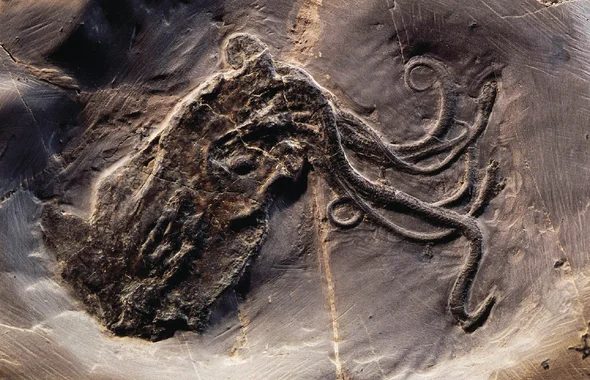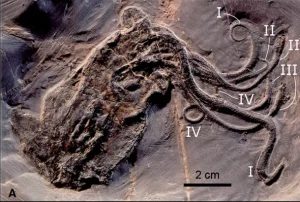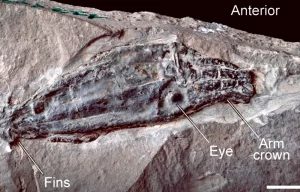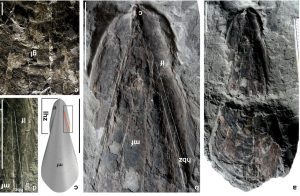In the realm of paleontology, the discovery of well-preserved cephalopod fossils is a rare and remarkable event. While ammonite shells and belemnite guards are commonly found in the fossil record, the delicate soft-tissue anatomy of cephalopods, with their multiple arms, is seldom observed.

Among the notable cephalopod fossils is a 165-million-year-old specimen, a fossilized octopus named Proteroctopus ribeti, uncovered in France in 1982.
Initially described by J. C. Fischer and B. Riou, the fossil provided a unique glimpse into the anatomy of an ancient octopus. However, due to its flattened appearance, the intricate details of the specimen’s anatomy were challenging to discern.
More than three decades later, a team of paleontologists led by Isabelle Kruta from Pierre and Marie Curie University in Paris revisited the fossil using advanced imaging techniques.

Employing synchrotron microtomography, a high-definition imaging method, the researchers reconstructed the three-dimensional structure of the cephalopod. This technique allowed them to reinflate and restore the fossil, providing a more accurate representation of what the ancient octopus looked like in its natural state.
The study, published in Palaeontology, revealed that Proteroctopus likely belonged to a major octopus group called Vampyropoda, which includes modern forms like the common octopus and the vampire squid.

While sharing similarities with contemporary deep-sea Vampyropoda, such as the absence of an ink sac, Proteroctopus exhibited unique features. Notably, it had eight arms and fins on either side of its body, and its suckers were obliquely offset from one another.
The findings contribute to an emerging consensus that octopus body shapes were already diverse around 164 million years ago, challenging previous assumptions about the evolution of these creatures.
As paleontologists continue to explore the fossil record, Proteroctopus serves as a valuable piece in the puzzle of understanding the ancestral octopus.

The study highlights that certain characteristics thought to be recent developments in octopus evolution were already present in the Jurassic period. The quest for more fossils holds the promise of unveiling further secrets about the ancient inhabitants of Earth.





